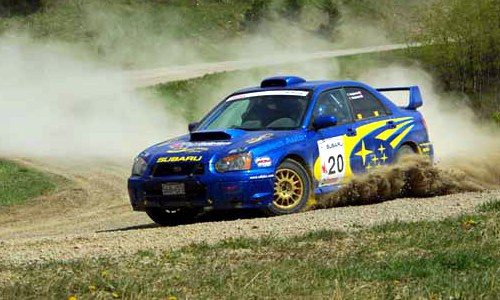Driving Basics for Wannabe Rally Racers
Amateur rally racing is an increasingly affordable sport to try out and test your driving skills “to the max” without resorting to pulling donuts in the local K-Mart parking lot. Rally driving experience days are popular events for people of all ages and ability levels. From ambitious young drivers dreaming of motor racing stardom, to those looking for 60th birthday ideas for the gear-head in their life, investing in a genuine one-day rally racing class is good fun.

To help you make the most of your day on the rally racing course, here’s a little bit of advanced knowledge to help you get comfortable, not to mention that you can show off to your friends by sounding like you know what you’re talking about.
NOTE: Needless to say, don’t try these techniques on the open road and listen to the advice of your instructors on the day of your rally driving experience.
Handbrake Turns
Handbrake turns are a crucial skill for quickly negotiating those hairpin bends, kicking the car around the tight corners. They also look pretty cool as well.
Problem retrieving videos from provider: Not FoundYou will be advised which corners are appropriate for this on the day, but the best surface is hard with a loose gravel covering to give you that extra bit of skid. Slow down with the foot brake to around 20mph as you approach the bend and keep the car in second gear. Grab the steering wheel on one side – 3 o’clock for a left-hand turn, or 9 o’clock for a right-hand turn – and quickly turn it 180 degrees – to 9 o’clock to turn left, to 3 o’clock to turn right. As the car starts to turn grab the hand brake, keep the button depressed and pull up hard. This will lock the back wheels sending the car into a spin. Keep the steering wheel pointing in the direction you want to turn and when you see the exit point of the corner release the hand brake, hit the throttle and away you go. Hopefully.
Oversteering
For those less tight corners, you still want the car to slide to make sure you keep your speed up. That means forgetting some of the discipline you deploy on the roads and oversteering – that’s when ‘the back comes out’ and threatens to send you into a spin. Do it in a controlled way though and it can be an essential technique out on the track. Controlled oversteering is also known as ‘drifting.’
Problem retrieving videos from provider: Not FoundAs you approach the corner and turn the steering wheel in the direction of the bend, when you feel the back wheels start to lose traction the back of the car will try to force its way round to the front in the direction which you were turning. To compensate, as you feel the traction go, turn the steering wheel in the opposite direction to straighten up, floor the throttle and head down the straight.
Left Foot Braking
This is an essential technique for shaving some vital seconds off your track time and also helps you deploy moves such as oversteering or other drifting methods. In front wheel drive cars, breaking with your left foot while keeping your right foot on the throttle helps you maintain speed at corners. You can apply more brake if the car is understeering and hit the throttle hard to speed out of the bend. The time saved from not having to move your right foot from accelerator to brake also makes left foot braking a handy tip for getting the best time possible.
Problem retrieving videos from provider: Not FoundHowever, just like the video says, some of the best drivers don’t use left foot braking. It’s an advanced technique that can be overcome with stronger skill in other areas.
About this post: This article has been created by Activity Superstore, the UK’s leading gift experience days supplier.








